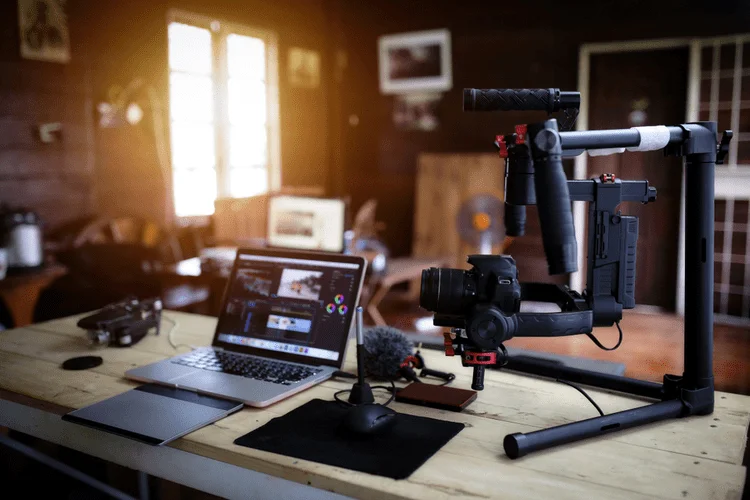Despite these variations, AI and robotics typically work together in various applications. Similarly, in manufacturing, AI techniques can analyze data to optimize manufacturing blockchain development processes, while robots perform the physical tasks concerned in meeting or packaging. Robotics, then again, focuses on the design, construction, and operation of robots.

Understanding Robotics In Synthetic Intelligence
They use a combination of stored information and logical reasoning to make decisions, clear up problems or provide recommendations. Generative AI works through complicated algorithms and deep studying fashions, typically using techniques like neural networks. These networks are educated on vast amounts of data, permitting the AI to understand the underlying construction and patterns within the information. Generative AI refers to a sort of synthetic intelligence designed to create new content, whether it is text, pictures, music, or even video. When it comes to androids, that are robots designed to resemble people, the incorporation of artificial intelligence brings about quite a few advantages.
Robots can be programmed to carry out varied duties autonomously or underneath human supervision. They can be outfitted with sensors, actuators, and mechanical limbs to mimic human-like actions and actions. Artificial intelligence (AI) refers back to the what is robotics in artificial intelligence ability of machines to carry out tasks in a method that is thought-about intelligent, similar to problem-solving or studying.
Intersection And Integration: Ai And Robotics
AI focuses on creating machines with human-like mental talents, corresponding to learning and problem-solving. On the other hand, robotics entails designing and developing physical robots to enhance automation and innovation. Synthetic intelligence is a department of laptop science that creates machines which might be able to problem-solving and learning similarly to people. Artificial intelligence technology is deployed at some stage in virtually every industry from the monetary world to manufacturing, healthcare to shopper items and extra. Google’s search algorithm and Facebook’s suggestion engine are examples of synthetic intelligence that many people use every single day. For more sensible examples and extra in-depth explanations, cheque out my website section dedicated to AI.
Firms like OpenAI and Google are on the forefront of AI research and development, pushing the boundaries of what AI robots can obtain. The definition of artificial intelligence goes past simple automation – it’s the flexibility of machines to think, learn and adapt. No longer confined to routine duties, AI now tackles complex challenges as soon as exclusive to human intelligence. It understands language, detects patterns, makes selections, and even predicts future outcomes with uncanny accuracy. Machine Learning is a subset of artificial intelligence (AI) that focuses on constructing systems that can learn from and make choices primarily based on data. On the opposite hand, artificial intelligence refers to the ability of a machine or a system to imitate or replicate human-like intelligence.
While vital progress has been made, there is nonetheless much work to be done to be able to develop really intelligent robots. One of the biggest challenges in creating clever robots is our limited understanding of human intelligence. Whereas we’ve made important progress in the field of AI, we’re still far from understanding the complete extent of human intelligence. Robots want to have the ability to be taught, cause, and make choices in a method that’s similar to human beings. This requires a deep understanding of the human brain and cognitive processes, which remains to be a topic of ongoing analysis and exploration.
On the opposite hand, robots are bodily machines or gadgets which are programmed to carry out specific duties, usually with the help of sensors, actuators, and other hardware parts. Whereas robots may be programmed with AI capabilities, not all robots are necessarily clever. Robotics and Synthetic Intelligence are two phrases which are often confused and sometimes not distinguished, but they actually refer to totally different applied sciences. Synthetic intelligence is a discipline that focuses on enabling machines to develop the same intellectual capabilities as people. Robotics, on the other hand, is the science of designing and constructing physical robots to improve automation and innovation. While robotics and AI have distinct characteristics, they often work together in manufacturing settings.
Synthetic intelligence can exist in the type of software program purposes or algorithms that may run on any computing device. It can perform complex calculations and analysis, make predictions, and supply recommendations primarily based on the data it processes. In conclusion, the usage of AI in autonomous robots has the potential to revolutionize numerous industries by allowing robots to make selections, adapt, learn, and interact with humans. However, this technological advancement also raises ethical concerns that have to be addressed.
- One space the place robotics is making important progress is within the area of healthcare.
- This kind of studying is used in fields like robotics, game-playing (such as AlphaGo), and even automated buying and selling methods.
- The actual game-changer is generative AI – machines that don’t just course of data, they create.
- Artificial intelligence refers to the simulation of human intelligence in machines, whereas an android is a robot that resembles a human being.
The integration of AI and Robotics has the potential to revolutionize varied industries and improve the quality of human life. Whereas Artificial Intelligence and Robotics are carefully related, the main distinction lies in their https://www.globalcloudteam.com/ focus and utility. Robotics, however, is a department of engineering and technology that deals with the design, development, operation, and use of robots. Robotics involves the physical embodiment of machines that may work together with the bodily world.
Can People Actually Die From A Damaged Heart?

A robotic arm with laptop imaginative and prescient that permits it to recognize objects could be an AI robotic. Self-driving automobiles, which also depend on laptop imaginative and prescient, are one other example of AI-enabled robotics. These are all autonomous machines, making them robots, and replicate human thought, making them AI. In comparison, AI in transportation allows autos to make intelligent selections based mostly on their environment, while robotics permits physical objects to work together with the environment. The combination of AI and robotics offers limitless potentialities for the method forward for transportation, from self-driving cars to drone supply companies. When it comes to healthcare, the combination of AI and robotics provides a spread of advantages.
On the other hand, robots are bodily machines that have the power to interact with their setting. Robots can be autonomous, which means they’ll operate independently, or they can be teleoperated, meaning they are managed by a human operator. They could be as simple as a robot vacuum cleaner or as complicated as a humanoid robot. On the one hand, robotics creates machines that have their very own mobility and might interact with the environment.